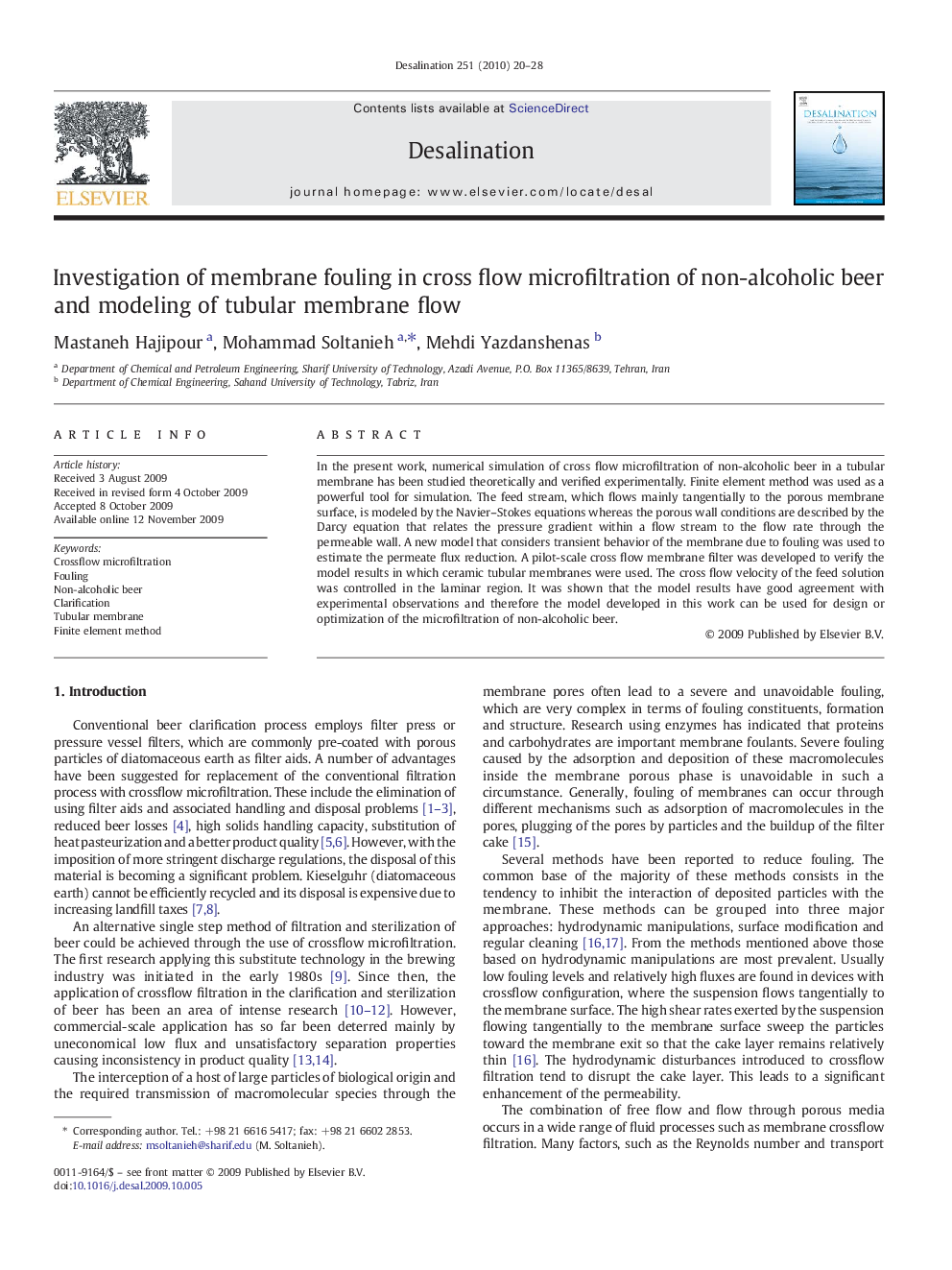| Article ID | Journal | Published Year | Pages | File Type |
|---|---|---|---|---|
| 625882 | Desalination | 2010 | 9 Pages |
Abstract
In the present work, numerical simulation of cross flow microfiltration of non-alcoholic beer in a tubular membrane has been studied theoretically and verified experimentally. Finite element method was used as a powerful tool for simulation. The feed stream, which flows mainly tangentially to the porous membrane surface, is modeled by the Navier-Stokes equations whereas the porous wall conditions are described by the Darcy equation that relates the pressure gradient within a flow stream to the flow rate through the permeable wall. A new model that considers transient behavior of the membrane due to fouling was used to estimate the permeate flux reduction. A pilot-scale cross flow membrane filter was developed to verify the model results in which ceramic tubular membranes were used. The cross flow velocity of the feed solution was controlled in the laminar region. It was shown that the model results have good agreement with experimental observations and therefore the model developed in this work can be used for design or optimization of the microfiltration of non-alcoholic beer.
Keywords
Related Topics
Physical Sciences and Engineering
Chemical Engineering
Filtration and Separation
Authors
Mastaneh Hajipour, Mohammad Soltanieh, Mehdi Yazdanshenas,
